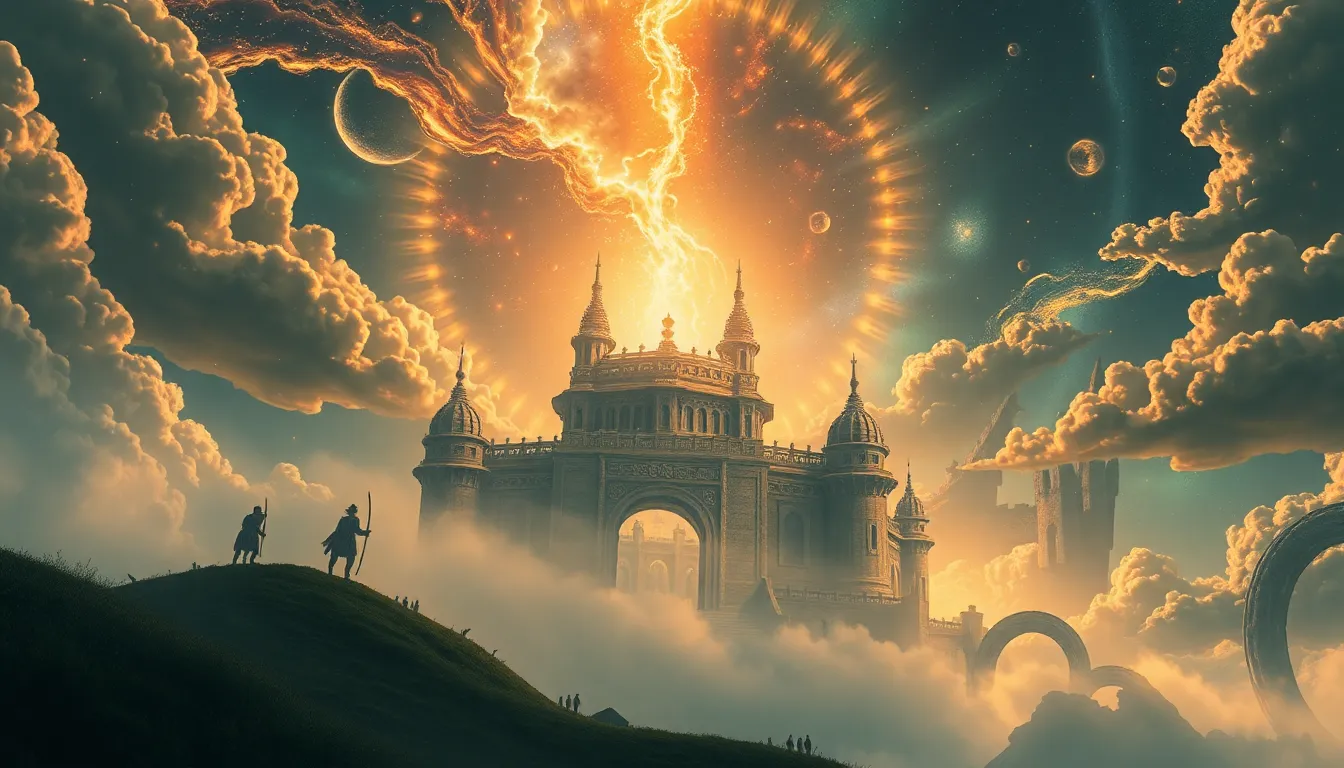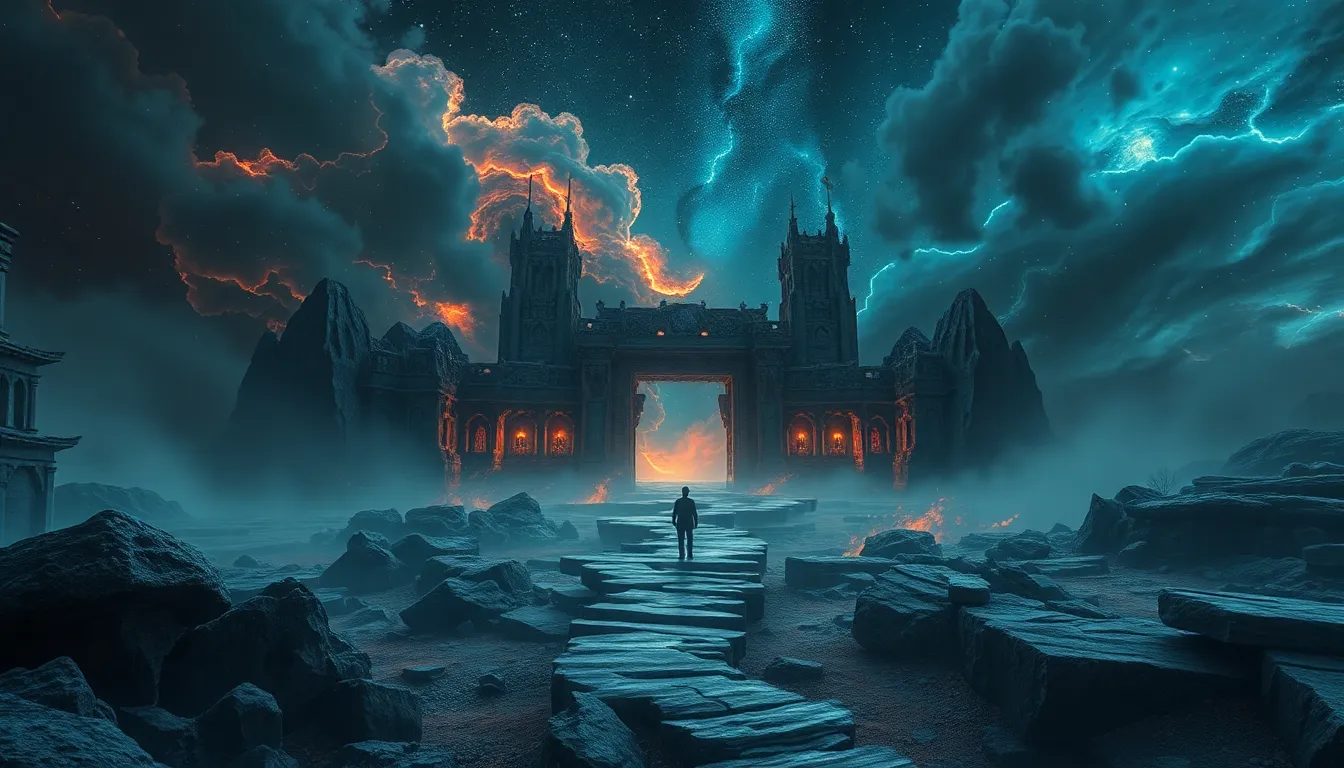The Kingdom of the Elemental Guardians: Myths of Nature’s Protectors
I. Introduction
The Kingdom of the Elemental Guardians is a rich tapestry of myths and legends that weave together the essence of nature and its forces. This mythical realm showcases guardians representing the four core elements: Earth, Water, Fire, and Air. Each guardian embodies distinct characteristics and powers that not only symbolize nature’s diversity but also reflect the beliefs and values of various cultures.
Throughout history, myths have played a crucial role in helping societies understand their environment and cultural heritage. These stories serve as allegories for human experiences, guiding moral lessons and fostering a connection with nature’s wonders. The purpose of this article is to explore the mythology surrounding the elemental guardians and their significance in our understanding of the natural world.
II. The Four Elements: Foundations of the Kingdom
A. Earth: The Guardian of Stability and Growth
The Earth Guardian is often depicted as a sturdy, nurturing figure, symbolizing stability and growth. This guardian is associated with the fertility of the land, the strength of mountains, and the nurturing aspects of nature.
- Characteristics: Resilience, nurturing, strength, and patience.
- Powers: Control over plants, minerals, and the physical landscape.
Myths surrounding the Earth Guardian vary across cultures. In many Indigenous cultures, Earth is revered as a mother figure, providing sustenance and life. For instance, in Native American folklore, the Earth is often personified as Mother Earth, a benevolent spirit that nurtures all living beings.
B. Water: The Guardian of Change and Adaptability
The Water Guardian embodies the fluidity of change and the adaptability required for survival. This guardian is often depicted as a graceful being, capable of transforming its form to suit various environments.
- Traits: Flexibility, intuition, and emotional depth.
- Abilities: Mastery over rivers, oceans, and rainfall.
Cultural stories about Water Guardians include tales of mermaids and water nymphs, who are often seen as protectors of aquatic life and symbols of transformation. In Hindu mythology, the goddess Ganga is revered as the personification of the Ganges River, embodying purity and the life-giving properties of water.
C. Fire: The Guardian of Passion and Destruction
The Fire Guardian represents the dual nature of fire as both a creator and a destroyer. This guardian is often depicted as a fierce and passionate figure, embodying the transformative power of flames.
- Dual Nature: Fire can bring warmth and light, but it can also cause devastation.
- Myths: Many cultures have stories of fire deities, such as Prometheus in Greek mythology, who stole fire from the gods to give to humanity, symbolizing enlightenment and rebellion.
Fire Guardians, like Pele from Hawaiian mythology, are often revered for their role in creation through volcanic activity, which shapes the land and creates new habitats.
D. Air: The Guardian of Freedom and Communication
The Air Guardian is often seen as a free-spirited entity, representing the concepts of communication, thoughts, and the breath of life. This guardian embodies the invisible forces that connect all living beings.
- Attributes: Freedom, intellect, and creativity.
- Significance: The Air Guardian is crucial for the exchange of ideas and the spread of knowledge.
Folklore surrounding Air Guardians includes tales of wind spirits and deities like Aeolus in Greek mythology, who controlled the winds and played a critical role in navigation and exploration.
III. The Elemental Guardians in Different Cultures
A. Indigenous beliefs and their elemental guardians
Indigenous cultures around the world often have deep-rooted beliefs in elemental guardians, viewing them as integral to their spiritual and ecological systems. These guardians are seen as protectors of their respective elements, ensuring balance and harmony in nature.
B. Eastern philosophies and the embodiment of elements
In Eastern philosophies, particularly within Hinduism and Buddhism, the elements are not just physical entities but also spiritual forces. The concept of “Pancha Mahabhuta” in Hinduism describes the five great elements, including space, as integral to the universe’s balance.
C. Western mythologies and the personification of natural forces
Western mythologies often personify natural forces through deities and spirits. For example, the Greek pantheon includes gods for each element, such as Gaia for Earth and Poseidon for Water, illustrating how these natural forces are revered and respected in cultural narratives.
IV. The Role of Elemental Guardians in Nature
A. Guardians as protectors of the environment and biodiversity
Elemental Guardians are often viewed as stewards of the environment, embodying the natural laws that govern ecosystems. They are seen as protectors of biodiversity, ensuring that each element maintains its role within the larger ecological system.
B. Symbolism of guardians in ecological balance
Each guardian symbolizes a critical aspect of ecological balance. For example, the Earth Guardian represents the foundation of life, while the Water Guardian illustrates the necessity of adaptability in changing environments.
C. Modern interpretations and relevance of elemental guardians
In contemporary society, the elemental guardians are increasingly recognized for their relevance in discussions about environmental conservation and sustainability. They serve as reminders of our connection to nature and the importance of preserving our planet for future generations.
V. The Guardians’ Realm: The Kingdom of Elementals
A. Description of the mythical kingdom and its landscape
The Kingdom of Elementals is often depicted as a vibrant realm, where each element has its domain. The lush forests and mountains represent the Earth, while flowing rivers and oceans symbolize Water. Fiery landscapes and skies filled with swirling winds characterize the realms of Fire and Air, respectively.
B. Interaction between the guardians and nature
In this mythical kingdom, the guardians interact harmoniously with nature, each fulfilling their role in maintaining balance. They collaborate to ensure that the cycles of life continue uninterrupted, from the growth of plants to the changing of seasons.
C. The hierarchy and relationships among the elemental guardians
The guardians often have a hierarchy based on the elements’ perceived power and influence. While they maintain individual identities and strengths, they also work together, fostering a sense of unity and interdependence.
VI. Legends of the Elemental Guardians
A. Epic tales of heroism and sacrifice
Many legends highlight the heroism and sacrifice of elemental guardians. These stories often involve battles against dark forces threatening to upset the balance of nature, showcasing the guardians’ commitment to their roles.
B. Stories of conflicts among guardians and their resolutions
Conflicts among the guardians can arise, often portraying the struggle between opposing forces, such as fire and water. These stories usually conclude with a resolution that emphasizes cooperation and understanding, showcasing the importance of balance.
C. Lessons learned from elemental guardian myths
Elemental guardian myths often contain profound lessons about respect for nature, the importance of balance, and the interconnectedness of all life. They remind us that each element, and by extension each being, plays a vital role in the tapestry of existence.
VII. Elemental Guardians in Contemporary Media
A. Representation in literature and art
In contemporary literature and art, elemental guardians are frequently depicted as symbols of nature’s power and beauty. They inspire artists and authors to explore themes of environmentalism and spirituality.
B. Influence on fantasy films and video games
Fantasy films and video games often draw on the concept of elemental guardians, creating rich worlds where these beings play central roles in the narrative. Titles like “Avatar: The Last Airbender” and various role-playing games exemplify this trend.
C. The resurgence of interest in elemental themes in popular culture
Recently, there has been a resurgence of interest in elemental themes within popular culture, reflecting society’s growing awareness of environmental issues. This revival encourages a deeper exploration of our relationship with nature and the guardians that symbolize its forces.
VIII. The Spiritual Significance of Elemental Guardians
A. Guardians as spiritual guides and protectors
Elemental guardians are often viewed


